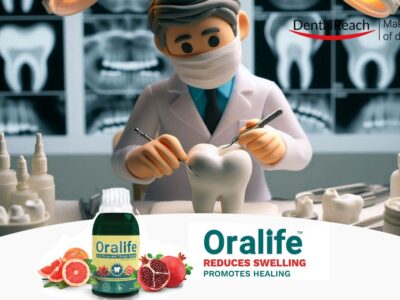The study aimed to evaluate the use of an anesthetic patch with the experimental formulation in the control of pain at the time of injection.
The administration of anesthesia for dental treatments is still necessarily of the injection type, despite many innovations having been made in other fields of dentistry. Unfortunately, the injection itself remains a significant source of anxiety during dental sessions. As a result, some patients prefer mild or moderate pain over receiving an injection during certain dental procedures.
Therefore, in clinical dental practice, a pre-anesthesia technique is often necessary, especially in pediatric populations. Topical anesthesia can be particularly useful here. Even today, children often avoid dental treatments due to fear of pain or exhibit exaggerated reactions that prevent treatment from being completed. This makes it crucial to find methods to avoid discomfort from injecting anesthetics.
Despite its potential benefits, topical anesthesia is currently underrepresented in scientific literature. Although studies have confirmed its validity as a pre-anesthetic method in dentistry, results on topical anesthetics—often focusing on gel formulations—are inconsistent and conflicting. Studies comparing various molecules like EMLA (a mix of 2.5% lidocaine and 2.5% prilocaine) and 20% benzocaine have shown varied outcomes regarding their effectiveness in controlling pain before injections.
Milani et al., for instance, found EMLA to be significantly better than 20% benzocaine for injections into the maxilla. On the other hand, Primosch and Rolland reported comparable efficacy between EMLA and benzocaine for palatal mucosa injections in pediatric patients. Conversely, Tulga and Mutlu found EMLA less effective than 20% benzocaine as a pre-anesthesia gel for pediatric patients.
While there are numerous studies on topical anesthesia gels, research on anesthetic patches remains limited but promising. Patches containing 5% lidocaine are commonly used for postherpetic neuralgia with good tolerability and low systemic absorption when applied extensively over several days.
The current study aimed to address this gap by evaluating an experimental patch containing a combination of lidocaine and prilocaine—a choice influenced by prilocaine’s rapid action. The patch required only three minutes to take effect compared to the five to fifteen minutes needed by previous studies involving gels—a critical factor for maintaining compliance among young patients.
The study compared this new patch against an experimental gel and a placebo gel using both subjective and objective pain scales. Results showed that approximately 80% of children experienced minimal pain with the injection when using the patch—a significant improvement facilitating easier treatment adherence.
This high efficacy can be attributed to several factors:
- Adherence: The patch adhered well to the oral mucosa, maximizing anesthetic absorption without being compromised by saliva.
- Taste: Unlike gels that require aspiration control due to taste issues spreading through saliva, the patch stayed in place comfortably.
- Size & Adaptability: The small size and excellent muco-adhesiveness allowed it to fit well within different areas of buccal mucosa compared to larger or less adhesive patches used previously.
An important aspect was evaluating these methods sequentially through a randomized pilot study involving about 30 patients where the patch yielded superior results consistently across sessions—even after potentially negative experiences from prior sessions.
One limitation noted was not measuring plasma concentrations of lidocaine-prilocaine post-application due to avoiding invasive blood sampling procedures among pediatric subjects—an area future research could explore further.
Pain control via local anesthetics is foundational in pediatric dental treatment—it can either build trust through painless procedures or compromise future patient-doctor relationships if pain occurs. This study tested a new topical anesthetic formulation using main pain scales as parameters; data indicated excellent values in pain reduction with the best results from using an anesthetic patch without any side effects observed.
Further studies might investigate this patch’s standalone efficacy as an alternative local anesthesia method specifically for mucous layer treatments like subgingival scaling or gingivoplasty.
Conclusion
The study highlights significant advancements offered by an experimental lidocaine-prilocaine patch over traditional gel-based topical anesthetics for managing injection-related pain in pediatric dentistry effectively while ensuring patient comfort through minimized side effects—paving the way towards more child-friendly dental care practices globally!




















Comments